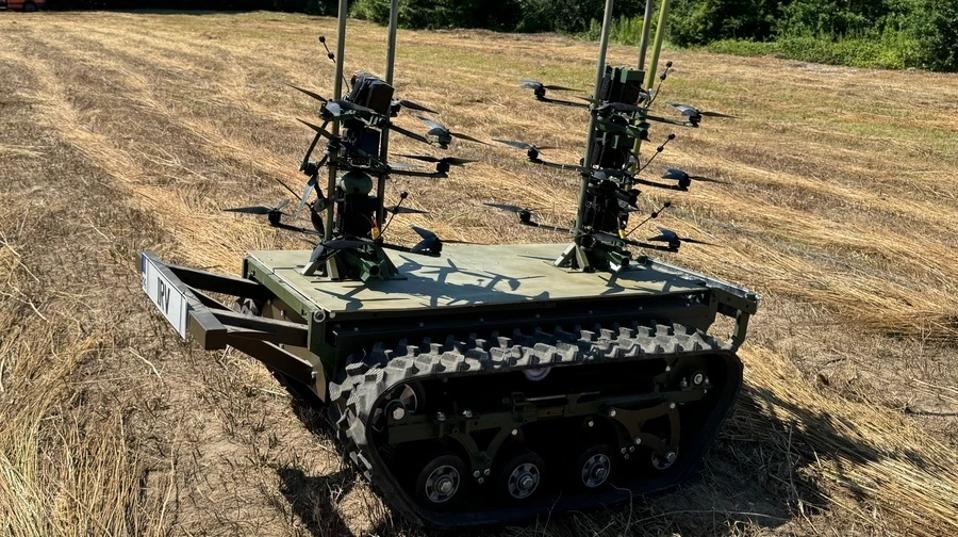Ukraine’s Black Widow ground drone carries six FPVs—costs less than a single Javelin missile

Ukraine has unveiled a new tracked robotic vehicle called Black Widow, designed to act as a carrier for FPV drones. Forbes reports that the system marks a shift from traditional gun-armed vehicles to uncrewed carriers capable of launching multiple drones.
From Little Boar to Black Widow
Forbes writes that Ukrainian company IRV presented the Karakurt or Black Widow last week at the Iron Demo event near Lviv. The robot is based on the Vepryk, or Little Boar, a modular uncrewed ground vehicle previously used for missions such as cargo carrying, casualty evacuation, mine laying, one-way kamikaze attacks, and combat with mounted machine guns. According to Forbes, its conversion into a drone carrier required relatively minor changes.
The Black Widow has a control range of 4 kilometers, limited by terrain masking. Forbes notes that the vehicle overcomes this limitation by carrying a relay drone that extends the effective range of FPV strikes to 30 kilometers. The vehicle mounts six FPV drones on two rails, which can be launched either directly or through a repeater. Forbes highlights an unusual feature: the ability to launch two drones together, with one observing the strike of the other and enabling a rapid follow-up attack.
According to Forbes, a full Black Widow system includes a ground control unit, two Vepryk carriers, and twelve FPV drones. The cost is under $50,000—about a quarter of the price of a single Javelin missile.
Rival Russian systems
Forbes reports that Russia is pursuing similar developments. At the Archipelago 2025 defense exhibition this week, Russian company Hermes unveiled its Argus carrier, a modified UGV built to transport, control, and launch multiple drones. Hermes stressed that its technology is focused on remote drone launch and control, which it claims can be applied to ground vehicles, aerial drones, or drone boats. Forbes adds that Argus appears to be a technology demonstrator rather than a system ready for operational use.
Another Russian project, called Dronobus, was shown on 8 August by the Scientific and Technical Center Kornei. Forbes describes the Dronobus as a fiber-optic–controlled UGV that also launches a fiber-controlled FPV. This combination provides a total range of 25 kilometers while avoiding radio emissions and resisting electronic warfare. Forbes notes that this too is an early prototype, but it demonstrates how fiber-optic technology can be integrated into drone carriers.
Changing battlefield balance
Forbes emphasizes that the Black Widow illustrates how FPV carriers are changing battlefield tactics. The vehicle can be pre-positioned and left waiting until a target appears, then activated for ambush strikes. Forbes reports that Ukrainian forces often rely on such ambush tactics, while Russian troops frequently carry FPVs forward to be launched at close range against Ukrainian trenches.